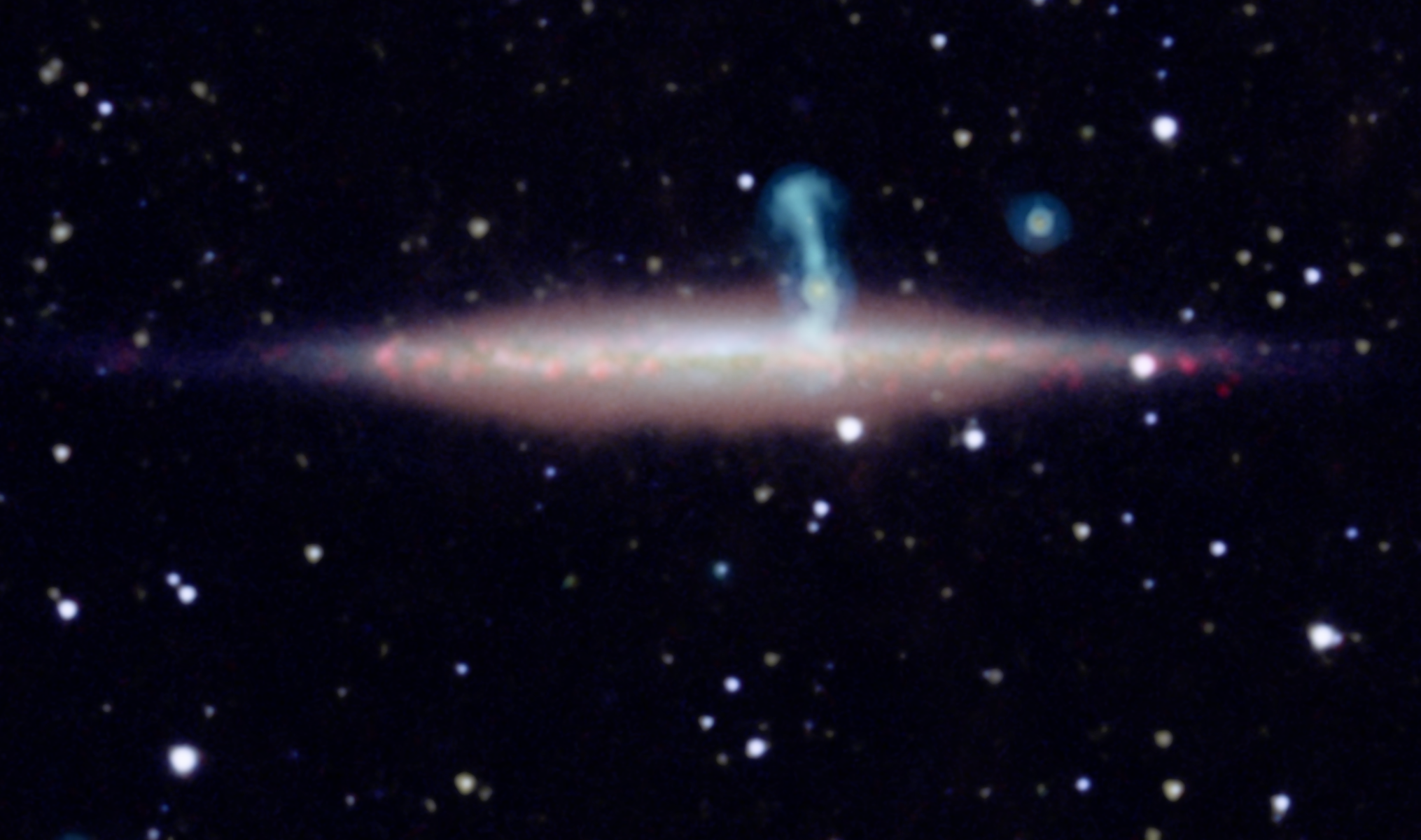Daily Image
15-11-2013Nature pulls a fast one!
| Submitter: | George Heald |
| Description: | Sometimes initial impressions are deceiving! In the case of UGC 10288, what was once thought to be one galaxy is now known to be two very different superimposed galaxies. This new information has been obtained as part of an ambitious survey recently performed with the Karl G. Jansky Very Large Array (VLA), the "Continuum Halos in Nearby Galaxies: An EVLA Survey" (CHANG-ES) led by Judith Irwin (from Queen's University in Canada). Today's image reveals the actual situation. UGC 10288, the edge-on disk galaxy that dominates the field, is the nearer galaxy and was the target of the VLA observations. The background radio galaxy, seen in cyan colors, is a distant background radio galaxy that is totally disconnected from UGC 10288 (it is some 7 billion light-years more distant). In earlier observations these two galaxies blended into one, such that all of the light was thought to be coming from UGC 10288 alone. What may seem at first blush to be a mere curiosity is actually providing unique information about the nearer of the two galaxies. First of all, the previously determined physical properties are now known to be different (for example, the inferred star formation rate is now considerably lower). More intriguing is the rare opportunity to study weak magnetic fields in the foreground object based on the observed properties of the background object. In fact, the angular sizes and orientations of the two galaxies are highly fortuitous, possibly allowing a detailed study of the vertical structure of the magnetic field in UGC 10288. An early analysis, presented in an Astronomical Journal paper (here) that is now being published on this system, shows that the magnetic field of UGC 10288 probably reverses direction between vertical heights of 1.5 and 3.5 kpc above the disk. We are now working on a more sophisticated study of the system, using the Rotation Measure Synthesis technique that was developed here at ASTRON. Color codings: NASA's WISE (far-infrared; orange) and Spitzer (near-infrared; yellow) space observatories, the Kitt Peak National Observatory's 0.9m telescope (ionized hydrogen; rose), the Sloan Digital Sky Survey (optical; purplish-blue), and NRAO's VLA (radio; cyan). |
| Copyright: | Jayanne English (U. of Manitoba), Judith Irwin (Queen's U.), Richard Rand (U. of New Mexico) and collaborators in the CHANG-ES consortium, NRAO VLA, NASA WISE & Spitzer missions, SDSS, and NOAO. |
| Tweet |  |
